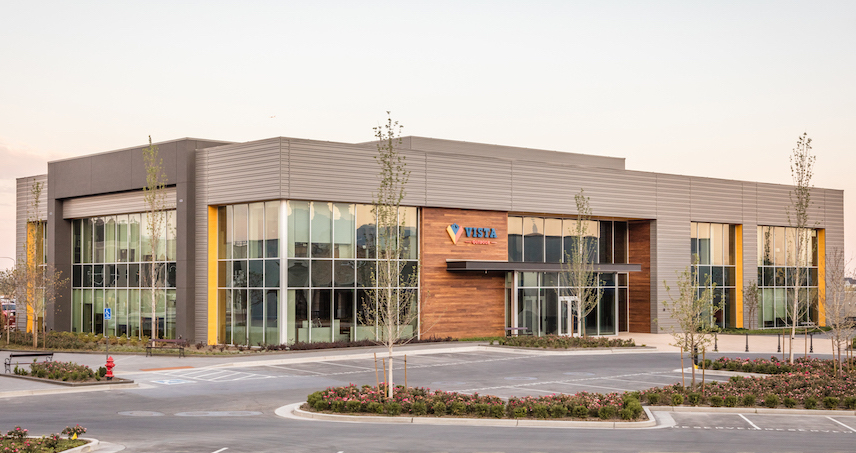By Eric Smith
One month after Vista Outdoor Inc. announced an agreement to sell Bollé, Cébé and Serengeti, the company said firearms should be the next business unit to go—likely before divesting the company’s sports protection brands.
“We’re now turning our eyes and are well into the market on a sale of our Savage firearms business, and that will come before [sports protection brands] Bell, Giro [and Blackburn], although we’re getting interest in both,” CEO Chris Metz said on Thursday morning’s earnings conference call with analysts. “The Savage firearms business sale is attracting, frankly, very good interest. We’re excited about it, and we want to support it in the same robust manner that we did with eyewear, and we feel like this is the appropriate approach.”
Shares were up 15 percent at market close for the company on Thursday. Before the market opened, Vista Outdoor had raised the company’s earnings outlook after reporting second-quarter earnings topped expectations as efforts to grow profitability start to pay off. The company’s sales guidance was lowered for the year due to continued tough conditions in shooting sports.
For the first quarter ended July 1, Vista Outdoor’s fully diluted earnings per share was (91) cents compared to 29 cents in the prior-year quarter. Adjusted EPS was flat, compared to 24 cents in the prior-year quarter. Wall Street’s consensus estimate had been a loss of 12 cents.
Sales were $529 million, down 7 percent from the prior-year quarter and shy of Wall Street’s consensus estimate of $543 million.
Vista Outdoor now expects earnings per share in a range of (76) cents to (56) cents and adjusted earnings per share in a range of 15 cents to 35 cents, compared to previous guidance of earnings per share in a range of 4 cents to 24 cents and adjusted earnings per share in a range of 10 cents to 30 cents.
The company also expects sales in a range of $2.10 billion to $2.16 billion compared to previous sales guidance in a range of $2.205 billion to $2.265 billion.
Potential divestitures could alter Vista Outdoor’s financial profile even further. On July 9, the company announced the agreement to sell the sports protection portfolio of Bollé, Cébé and Serengeti to private equity for $158 million, part of the company’s our dual strategy to focus on core outdoor consumers and reduce debt leverage. The sale is expected to close in the fiscal second quarter, which ends September 30.
“The business will have the opportunity to reach its full potential under new ownership,” Metz said last month. “This divestiture is the first step in our transformation plan, and will be the first of several potential asset sales that will significantly reduce Vista Outdoor’s leverage and provide additional resources to for us to reinvest in our core businesses.”
That transformation began in May, when Vista Outdoor announced the company would divest a number of brands and predicted earnings would erode significantly in the coming year. Brands hitting the selling block included Vista’s eyewear brands (already sold), sports protection brands, Jimmy Styks paddle boards and Savage and Stevens firearms.
“The bottom line is this: the company grew too fast and beyond its core,” Metz said on the fourth-quarter earnings call in May. “The portfolio became too diverse, and the pressure has mounted. We were too slow to make adjustments, and the ones we did make didn’t have enough of an impact to right the ship. This led to missed expectations and disappointment with our overall business, and our stock hit an all-time low.”
Some of that was apparent in the Q1 numbers. Vista Outdoor said the market for the company’s products remained challenging in the quarter, as evidenced by outdoor products sales declining 7 percent to $271 million.
“Declines in sport protection and hydration were due to softness in the specialty channel partially offset by increased sales in our outdoor cooking business driven by very strong customer demand,” Metz said.
And lower volumes in hunting and shooting accessories—sales dipped 7 percent to $258 million—were due to lower demand, he added.
“We continue to see challenges in our hunting and shooting-related product categories,” Metz said. “This softness has affected both of our operating segments for the past five quarters, but the biggest impact has been felt in our ammunition business.”
Rim fire in particular has seen a sharp decline, Metz said, and should take longer to recover, while other types of ammunition—including pistol, big game rifle and water fowl shot shell—have seen improvements. But the market remains volatile, with sales and unit variances week-to-week, month-to-month, Metz said.
“Though we believe we have reached the bottom, we have yet to see evidence of a sustainable recovery,” he said. “We monitor POS and sell-through weekly, but the data has yet to demonstrate any consistent trends. We believe certain categories, such as rim fire and small rifle, will remain soft, but there will be some offset by pistol and big game rifle.”
Vista Outdoor did see growth elsewhere, including 25 percent growth in outdoor cooking business, 14 percent growth in golf and 34 percent growth with direct-to-consumer sales at CamelBak.
Photo courtesy Vista Outdoor
[author] [author_image timthumb=’on’]https://s.gravatar.com/avatar/dec6c8d990a5a173d9ae43e334e44145?s=80[/author_image] [author_info]Eric Smith is Senior Business Editor at SGB Media. Reach him at eric@sgbonline.com or 303-578-7008. Follow on Twitter or connect on LinkedIn.[/author_info] [/author]
















